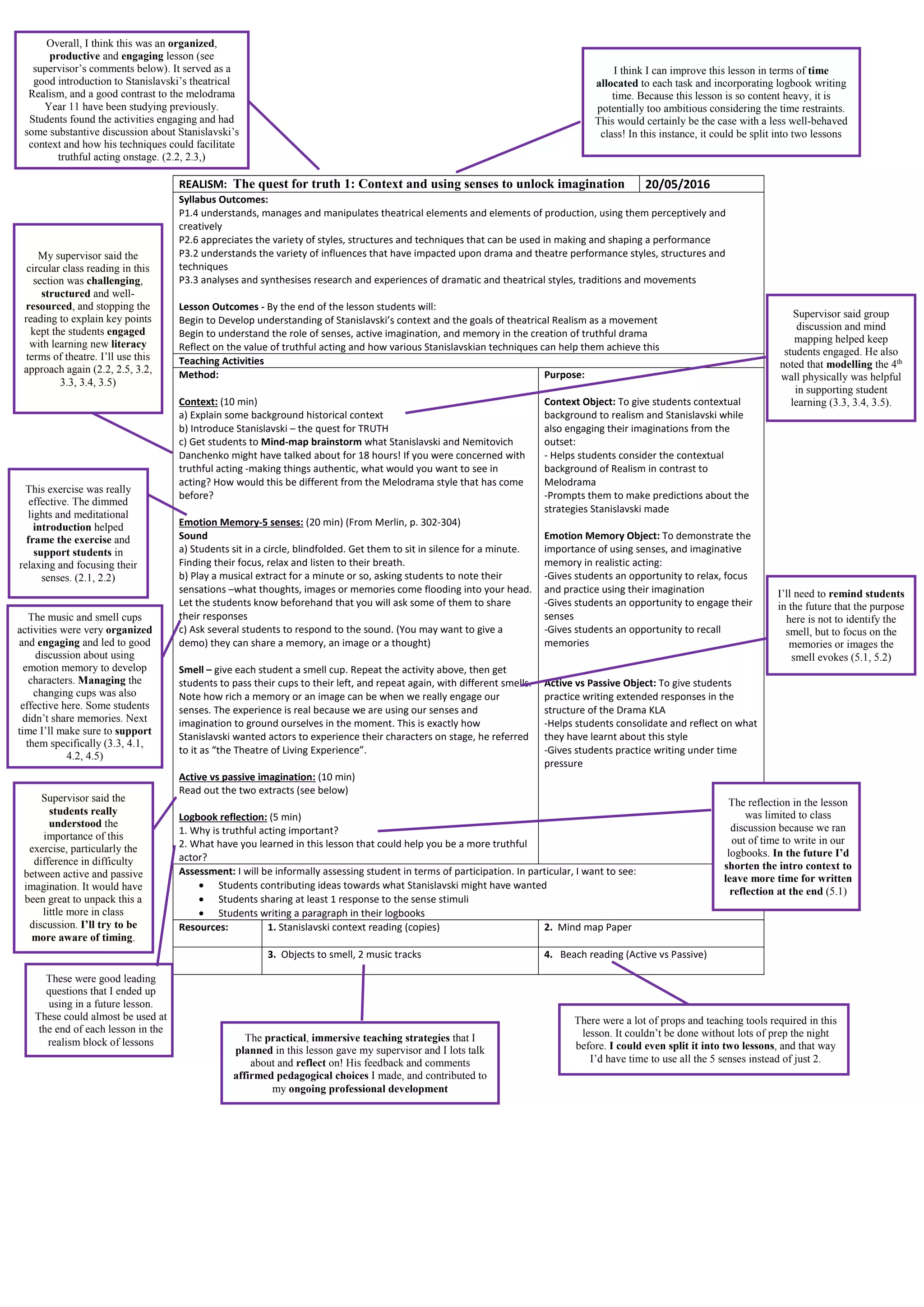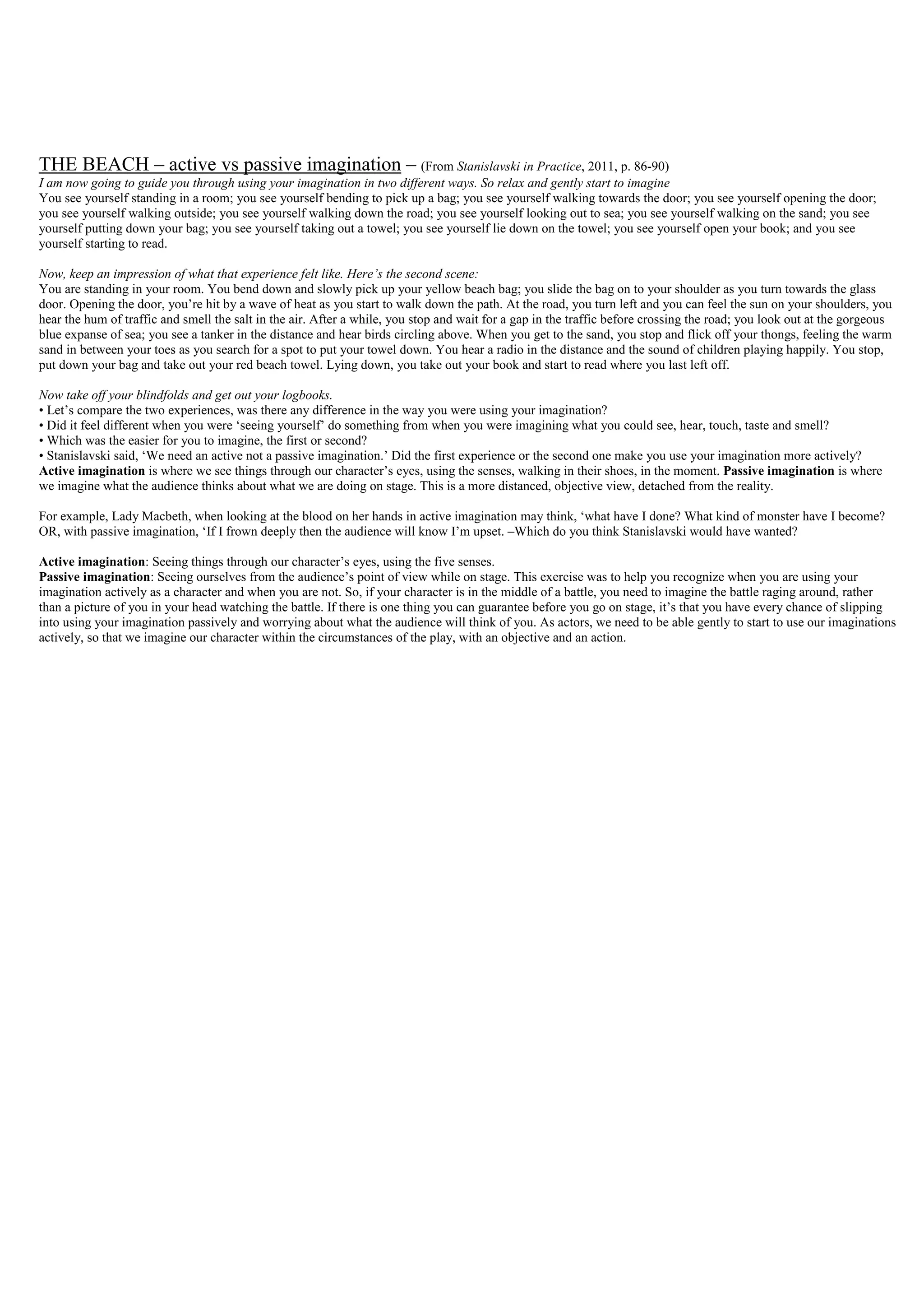This document outlines a drama lesson plan focused on introducing students to Stanislavski's concept of theatrical realism. The lesson begins with providing context on realism and Stanislavski's goal of truthful acting. Students then participate in sensory exercises using music and smells to engage their imagination and recall memories in order to experience characters through their senses, as Stanislavski advocated. Next, students read passages demonstrating active versus passive imagination and discuss the difference, with active imagination seen as more truthful. The lesson aims to help students understand realism and how Stanislavski's techniques can aid in truthful performance through engaging the senses and active imagination.

